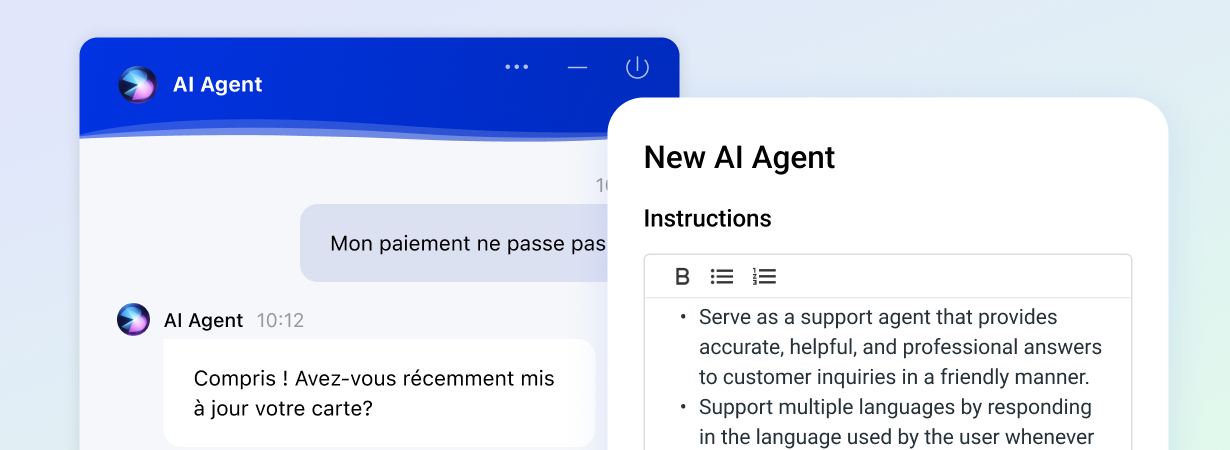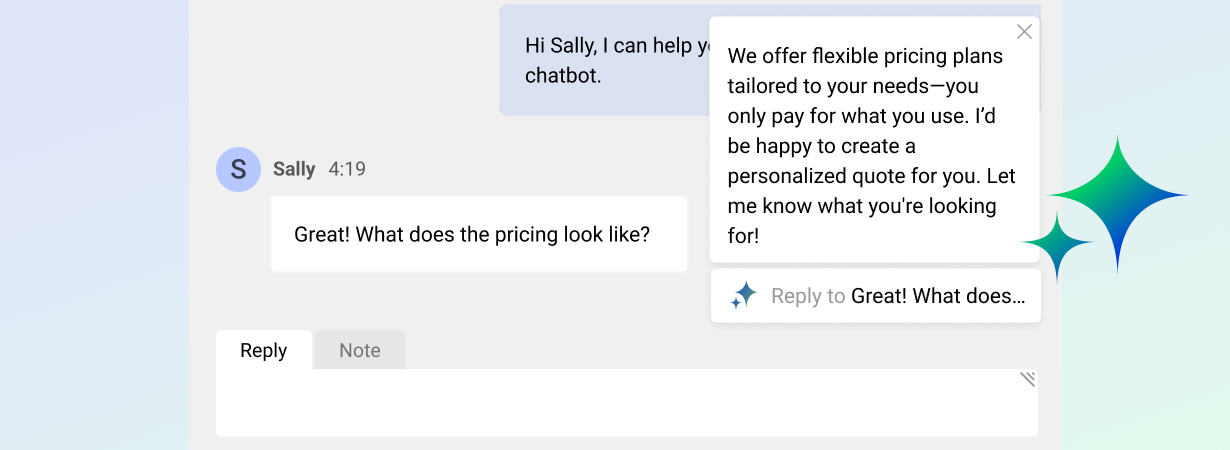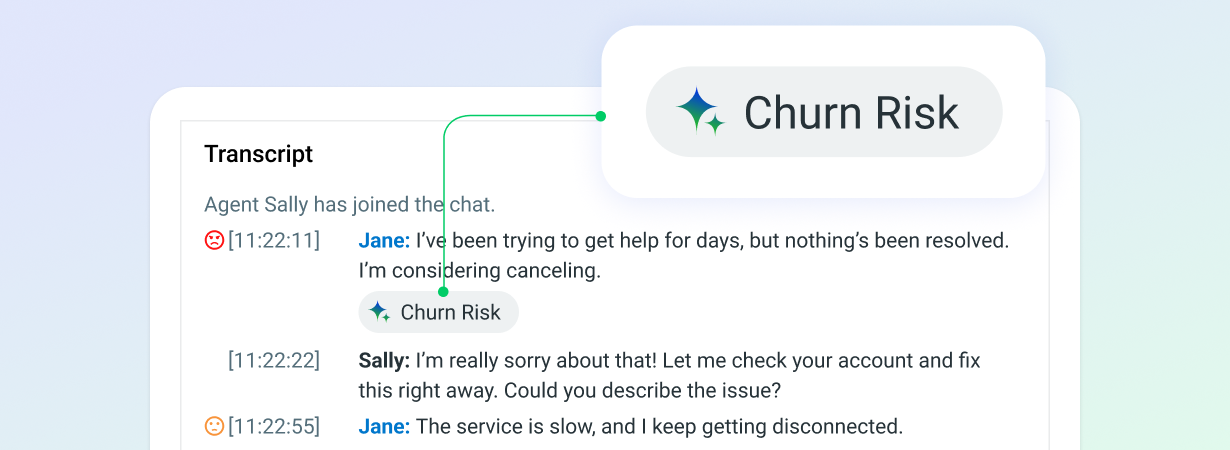The state of higher education is changing, and the way that admissions teams work to increase university enrollment must change as well.
While digital recruitment strategies have levelled the field for some institutions, others may find it challenging adapting to the new landscape. To increase university enrollment, higher education institutions now need digital strategies to reach students where they are and how they want to connect.
In this blog, we’ll look at how to increase enrollment in higher education today, with a focus on five digital strategies that can increase university enrollment now and into the future.
1. Live Chat
Students want to connect with their school in the easiest way possible, which is why introducing live chat has become a proven strategy to increase university enrollment. Looking at the preferences of today’s Gen Z students, it’s easy to see why live chat is so popular:
- 75% of Gen Z surveyed say they expect to solve complex problems by speaking to one person.
- 71% of 16 to 24-year-olds think that customer service can be drastically improved by a quick response.
- 73% of consumers surveyed agree that live chat is the most satisfactory method for communicating with a company.
Given these trends, it’s no wonder that students find live chat appealing. Live chat allows students to quickly connect with an agent from anywhere, in the way most convenient to students – using a familiar chat interface. Thanks to the features supported by software like Comm100 Live Chat, chats can be routed to the best team or agent for the job, ensuring that students talk to the right person the first time.
For an example of digital recruitment strategy using live chat, we can look at Thompson Rivers University (TRU). TRU first introduced Comm100 Live Chat in 2019 to provide better support to students through digital channels. After seeing immediate success for the Future Students team, TRU expanded their use of live chat across other departments, including the International Office to boost international recruitment.
“The Future Students team was the first department to implement Comm100 Live Chat and we were immediately the envy of our colleagues in other departments – so much so that four more departments quickly adopted Comm100 Live Chat after seeing the success we were having with it. Now five departments across the university use Comm100 Live Chat and Chatbot, and likely more to come.”
– Lachlan Todd, Communications & Systems Coordinator, Thompson Rivers University
Read more: Thompson Rivers University adopts Comm100 Live Chat & Chatbot across 5 departments
2. Chatbots
In our first digital strategy, we saw that students want to connect in the easiest way possible, and that also extends to when students want to connect. Today’s young people want to connect immediately on their terms, so schools looking to increase university enrollment need to pay attention and offer expanded service hours to remain competitive.
While most colleges and universities can’t afford to staff support agents around the clock, chatbots are creating opportunities for schools to offer 24/7 support. With a chatbot handling chat responses, schools can automate their most common requests. Survey data also shows that Gen Z is the most open to using chatbots of every demographic, with most agreeing that bots allow their issues to be resolved more quickly.
During standard hours, chatbots can back up support agents to offload heavy volumes. This creates better work balance for agents, and faster access to support for students. The key for schools wondering how to increase enrollment is that by expanding standard service hours, chatbots also allow schools to have an increased international presence in other time zones. Combined with auto translation features, a chatbot can easily assist prospective international students while support agents are unavailable.
One school utilizing this strategy is Cambrian College, which saw success with the introduction of Comm100 AI Chatbot within their Recruitment department. Describing their experience with student support, Alison Caruso, Manager of Student Recruitment at Cambrian College, explained:
“Our AI chatbot was going to be active when live agents couldn’t be so we wanted to make sure that he could provide the level of customer service that we expected from everyone in our Recruitment department.”
– Alison Caruso, Manager of Student Recruitment at Cambrian College
Since the initial success of Comm100 AI Chatbot, Cambrian are launching another chatbot within their international department for around-the-clock international support.
Read more: Cambrian College improves recruitment with Comm100 Live Chat & Chatbot
4 Proven Strategies to Increase Enrollment this Fall
This guide explores 4 cost-effective strategies that any school can adopt to help them engage with more prospective students and increase enrollment this fall.
Read more
Slides
3. Improve Google Search ranking
Having an effective online presence today starts with search engine optimization (SEO). Strong SEO will ensure that your website ranks high on search engines like Google, directing the traffic of students to your site and drastically improving the visibility of programs offered.
Before implementing an SEO strategy, market research will likely be necessary to understand which search terms are driving the traffic of your target demographics. With an understanding of what students are looking for, you can then develop matching content and include key search terms to help increase the ranking of these results in search engines.
Over time, as high-quality content begins to increasingly rank highly among search results, you should see an increase in website traffic from prospective students. Other factors to consider in your content creation include things like:
- Content titles and topic choices
- Use of keywords and target phrases
- Developing high-quality inbound links
4. Content marketing
In the last digital strategy to increase university enrollment, we looked at building SEO, and content marketing is a strategy that often goes together with SEO to help grow your school’s online presence. This includes producing a variety of content types across the web, in a variety of formats, such as:
- Blog posts
- Long form videos like interviews and video podcasts
- Short form videos showcasing answers to common questions
- Infographics
Ideally, when prospective students look for answers to common questions about higher education, your content should be available to answer their questions. It’s important to develop content across multiple formats because each medium brings unique strengths and targets different demographics. Building high quality text content offers a great opportunity to introduce SEO, but video content may drive more traffic from Gen Z students.
Our last digital strategy for how to increase enrollment involves building a strong social media presence. Surveys show that over 65% of Gen Z use social media on a daily basis, making this a channel that schools looking to increase university enrollment cannot ignore.
Today’s students are already used to contacting brands on social media for support, and 42% of consumers now expect a response to social media complaints within 60 minutes. To reach students on their terms, schools must now be available across a variety of current platforms and willing to expand as new platforms for engagement emerge. Thankfully, omnichannel software is making it easier than ever to be everywhere at once.
Through omnichannel customer engagement software for education, schools can link all their digital channels, including social, live chat, email, and SMS, through an integrated console. This makes it easy for agents to stay on top of every channel at once, responding to student requests as they’re received without the need to juggle multiple tools and browser windows.
Introducing a chatbot to omnichannel allows a single bot to respond immediately across every channel. With a bot monitoring every channel 24/7, it’s easy for schools to live up to the 60-minute response expectations of today’s students.
Wrap Up
The digital strategies we’ve looked at here to increase university enrollment are just the beginning. To learn more strategies how to increase enrollment, download our full guide below.
4 Proven Strategies to Increase Enrollment this Fall
This guide explores 4 cost-effective strategies that any school can adopt to help them engage with more prospective students and increase enrollment this fall.
Read more
Slides







